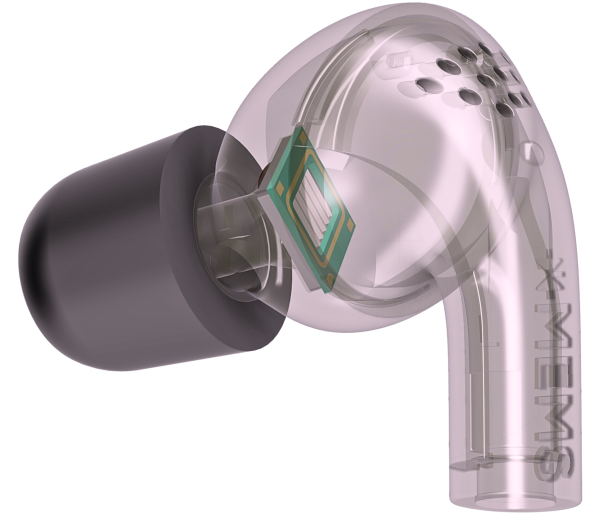xMEMS: New Breed of ‘Ultrasonic’ Microspeakers Will Fundamentally Change Earbuds

Unlike a traditional voice-coil-and-magnet speaker that generates sound by simply moving air, the new Cypress driver is a highly efficient “air pulse generator” that creates an “amplitude-modulated” ultrasonic carrier signal, which when demodulated, shifts sound into the audible range of human hearing. The result is “rich, detailed, bass-heavy high-fidelity sound,” according to xMEMS.
Cypress is described as more faithful to the original recording than current speaker technologies because the “sound envelope of ultrasonic pulses is an exact acoustic copy of the source signal.” The concept of producing audible sound/music from ultrasound has been the topic of research and development for decades, though it has never achieved broad commercial success.
“Cypress maintains all of the benefits of xMEMS’ existing speakers, while being 40 times louder in low frequencies, achieving a key requirement for ANC [active noise canceling] earbuds,” explained Mike Housholder, vice president of marketing and business development for xMEMS. “By shifting to a ‘sound from ultrasound’ principle, the xMEMS Cypress microspeaker can now officially replace traditional coil-and-magnet speakers in active noise canceling earbuds.”
xMEMS CTO Jemm Liang added: “Cypress not only revolutionizes how sound can be reproduced from an electric signal, but it also redefines how it should be reproduced.”

The ability to produce increased SPLs at low frequencies is particularly important for ANC earbuds. “Cypress’ faster electrical-to-acoustic conversion can contribute to wider ANC bandwidth,” according to the company. Extending the bandwidth to higher frequency noise sources, for example, would make it possible to cancel out the sound of a crying baby. “Plus, Cypress’ near-constant electrical-to-acoustic conversion time (group delay), can reduce DSP filter complexity which, in turn, leads to shorter DSP latency, rounding errors, and power consumption when processing ANC.”
Like all of xMEMS solid-state speaker designs, the Cypress is tiny at 0.25 x 0.26 x 0.06 inches and, in addition to delivering robust bass, is said to be capable of hitting sound-pressure levels (SPL) in excess of 140 dB at frequencies as low as 20 Hz (as measured in a standard IEC60318-4 ear simulator).
The first public demonstrations of Cypress will be conducted in January at CES 2024.
Due to its superior resolution in the time domain, the technology behind Cypress is also well-suited for reproducing sound in high-resolution and spatial audio formats. The technology leverages the same production-proven platform used for existing xMEMS products and exploits the benefits of solid-state speaker design, including increased reliability, near-zero phase shift, superior part-to-part phase consistency for more accurate spatial imaging, and faster mechanical response for improved detail, clarity, and separation.
Working samples are expected in June of 2024 with mass production to follow in late in the year. xMEMS has not indicated which brands will be the first to adopt the technology. For more information on xMEMS technology, visit xmems.com.























































